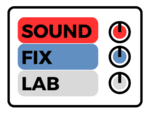Equalization (EQ) is a fundamental process in music production that allows us to shape the tonal balance of audio signals. Within the realm of EQ, there are two primary approaches: subtractive EQ and additive EQ. In this article, we will explore these techniques, along with other types of EQ, to understand when and why to use each type. We will also address the common misconception of whether a boost is equivalent to a cut above and below, and if a cut is the same as a boost above and below.
Subtractive EQ
Subtractive EQ involves cutting specific frequencies to reduce unwanted elements or address frequency masking issues. By attenuating problem frequencies, we can create more clarity and separation in the mix. Subtractive EQ is particularly useful for removing resonant or harsh frequencies, taming excessive bass, and reducing frequency buildup. It helps to carve out space for other elements to shine and improves the overall balance.
Additive EQ
Additive EQ, on the other hand, involves boosting specific frequencies to enhance desired elements or add character to the mix. By increasing the level of certain frequencies, we can bring out the presence, warmth, or definition of an instrument or vocal. Additive EQ is commonly used to emphasize the fundamental tones, enhance the brilliance or airiness of a sound, or shape the overall tonal balance in a pleasing way.
Boost vs. Cut
It is important to understand that a boost and a cut are not exact opposites of each other in terms of their impact on the frequency spectrum. A boost increases the level of a specific frequency range, enhancing its presence or intensity. However, it also affects the surrounding frequencies to some extent. On the other hand, a cut reduces the level of a specific frequency range, attenuating its prominence. While a cut can create the perception of a boost in the surrounding frequencies, it does not amplify them to the same degree as a dedicated boost.
When to Use Each Type
The choice between subtractive EQ and additive EQ depends on the specific needs of the audio material. Subtractive EQ is typically used to address problematic frequencies, remove unwanted elements, or create more space in the mix. Additive EQ, on the other hand, is employed to enhance desired elements, bring out specific characteristics, or shape the tonal balance in a pleasing way.
In practice, it is common to use a combination of subtractive and additive EQ techniques. Starting with subtractive EQ to address any issues or unwanted frequencies allows for a cleaner foundation. Then, additive EQ can be used to enhance and emphasize the desired elements, adding warmth, presence, or definition.
Subtractive EQ and additive EQ are two essential techniques in music production. Subtractive EQ helps to remove unwanted elements, address frequency masking, and improve clarity, while additive EQ enhances desired elements, adds character, and shapes the tonal balance. Understanding the distinctions between the various types of EQ and knowing when to employ each technique empowers you to sculpt the perfect sound. Remember, EQ is a creative tool, and experimentation, coupled with critical listening, will help you achieve the desired sonic vision for your mix.




